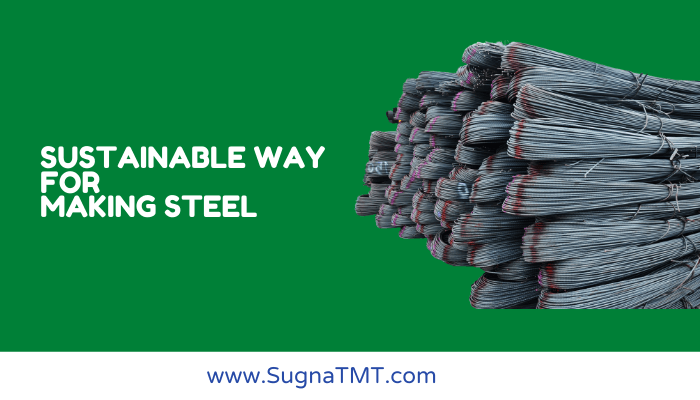Steel is particularly sustainable since it can be used indefinitely once it is created. Steel may be reused and recycled indefinitely without losing any of its quality. Steel will continuously be used thereby leading to the non-renewable resources like minerals and fossil fuels are not wasted and getting employed drastically.
Therefore, for the steelmakers, five crucial steps might direct the sustainable transformation. Take the necessary steps to comprehend the sustainable method of producing steel.
Here are 6 Sustainable Ways for Making Good Steel

1. Examine and implement green technologies
Risk, cost, quality, and decarbonization must all be balanced to combine short-term commercial imperatives with long-term value generation. Considering the greater capital expenses seek to get covered by the long-term benefits of using sustainable operations and the greater enhanced ESG performance.
Cutting down the financial risks and aligning investments with the cyclical gains of the green technologies. To cut emissions, steelmakers might take into account implementing some of these cutting-edge technologies:
-
Eliminate Carbon-dioxide
Eliminating carbon dioxide (CO2) from steel manufacturing is one effort to lessen the impact of the steel industry on the environment.
-
Focus using Hydrogen
By replacing hydrogen produced from fossil-free energy with the coking coal that is typically used in the production of ore-based steel, manufacturers can make steel with nearly no carbon footprint.
2. Boost sustainable steel production
Steel is increasingly in demand as industries are under increased pressure to cut scope 3 emissions. Automakers in particular, who consume 12% of the world’s steel, are speeding up decarbonization efforts and looking for cleaner inputs.
Steel producers who develop more environmentally friendly goods can profit from this demand. The trend toward certified green steel goods is already being seen by several major manufacturers, and it is expected to grow.
3. Better ESG performance
Investors are looking for more environmentally friendly portfolios and are expecting better ESG performance and compliance from possible investment targets.
Government pressure to decarbonize is growing at the same time, with many nations implementing carbon tax regimes and emission trading systems (ETS).
Beyond meeting legal requirements and stakeholder expectations, improving ESG measures will benefit steelmakers. “Companies with stronger ESG performance can finance projects more affordably, manage resources better, lower operational risk, and be more adaptable to future developments.
4. Recognize the value of digitization.
Steelmakers are already among the digital leaders in their sector thanks to the widespread adoption of technology to improve defect recognition, process safety, and quality assurance.
To increase sustainability performance and reporting, there is a potential to use digitalization more efficiently to monitor, track, record, and evaluate processes. Digital solutions can also help to boost productivity by optimizing energy use, cutting waste, and reducing emissions.
5. Work together with all parties involved to hasten the changeover.
Sustainability-related decisions cannot be taken just based on the financial consequences to the company.
Instead, steelmakers must operate in the best interests of all parties involved and be ready to compromise fairly between the needs of business, final customers, and the environment.
6. Developing green steel for the future
The steel industry won’t switch to greener steel on a national scale. Steel producers in Western regions and nations that are already investing in improving sustainability are likely to see more rapid adoption of low-carbon technologies than steel producers in China and India.
With this, the combination of newer capital assets and cost pressures will force a more gradual transition.
To reduce energy intensity, reduce carbon emissions, increase material efficiency, and promote the circular economy, steelmakers should make modest investments in process innovations even in countries where growth would be slower.
Final Words
A tiered digital road map will be necessary to exploit the promise of new technologies, gain economies of scale, and enhance sustainability throughout the steel value chain to make this change.
Steel is one of the most durable, endlessly recyclable materials on the planet. It is also the most recycled material. Throughout green steel’s entire life cycle, investing in the development of a more environmentally friendly production method will pay huge environmental dividends.

